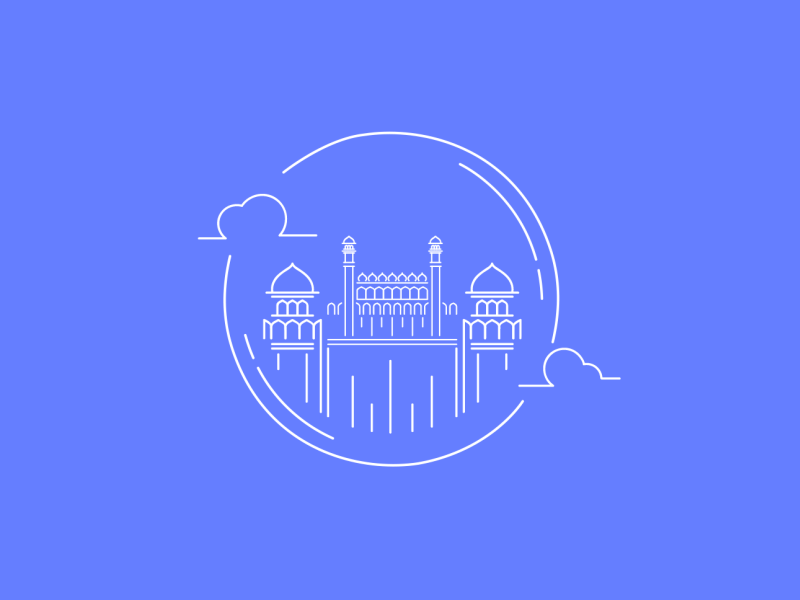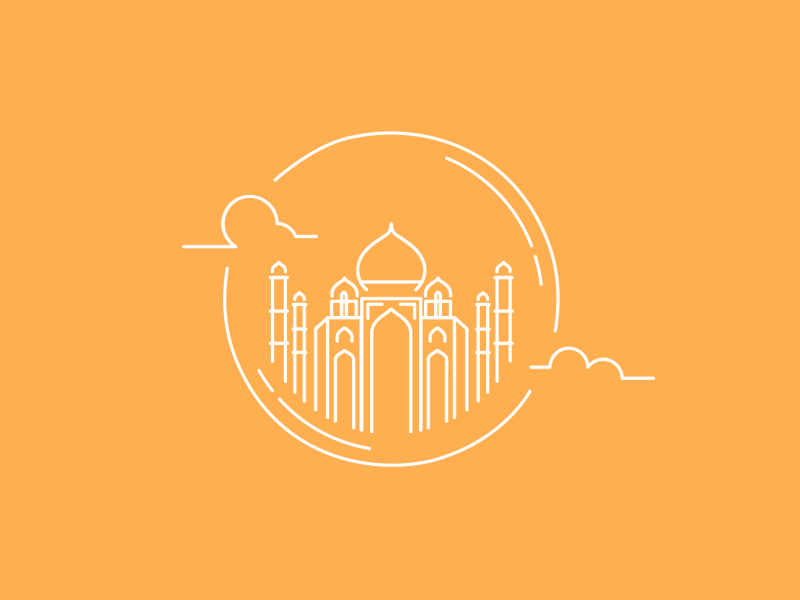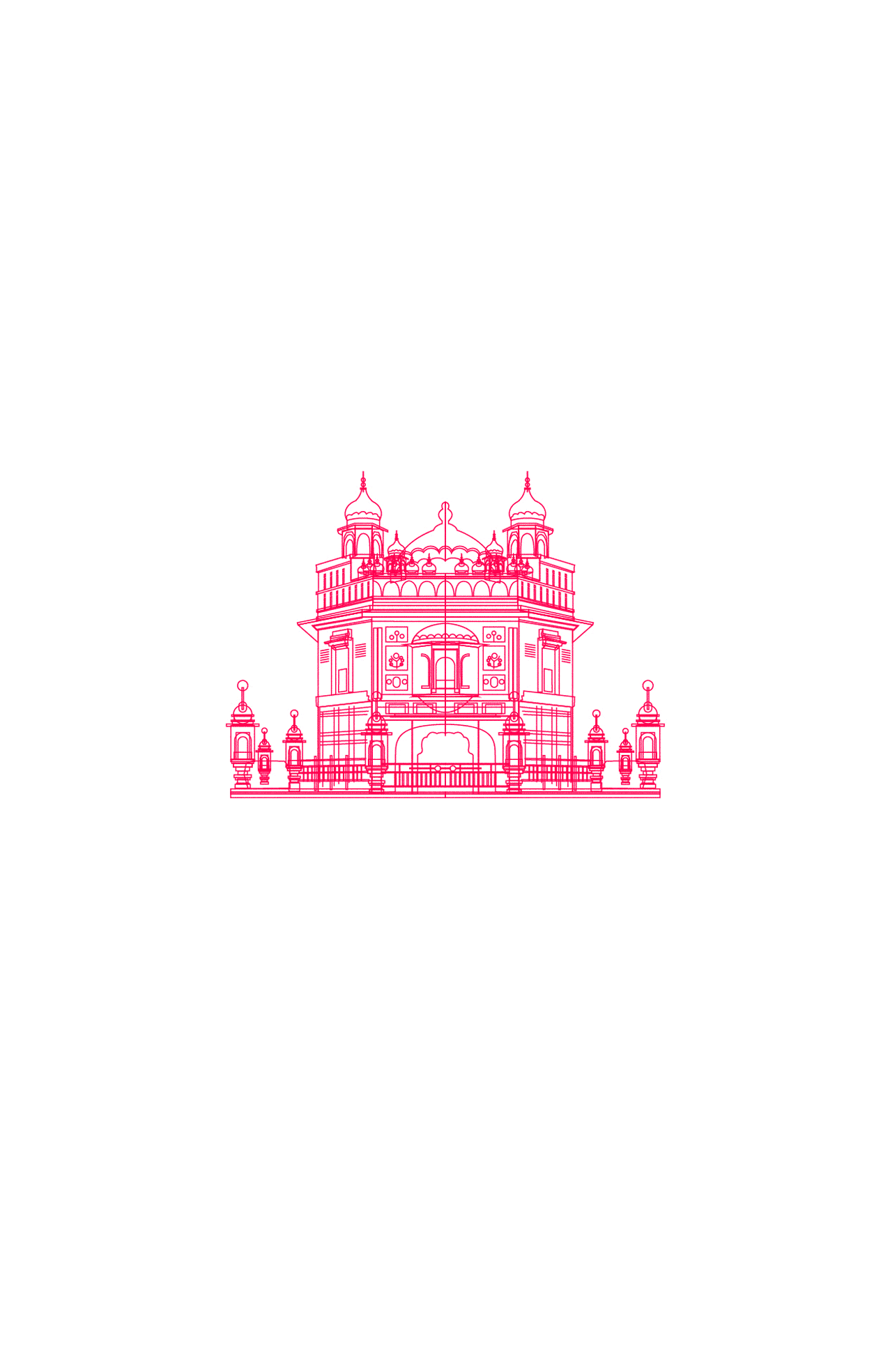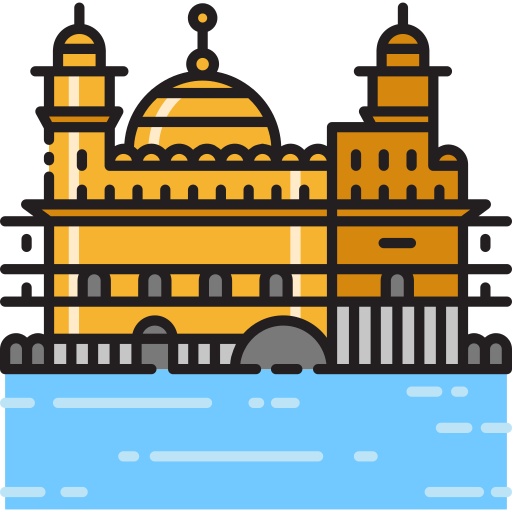Special Volunteering Program (Punjab)
9 Days Level 3 - Certificate
$1800 REGISTER NOW

Places you will visit
Delhi NCR
Amritsar
Agra (Taj Mahal)
Inclusions

Food

Accommodation

Transport

Distribution
Exclusions

Currency Exchange

Travel Insurance
.png)
Tickets

Visa
DAY 1
Delhi - Orientation and Workshop
DAY 2
Delhi and NCR Field Activity 1 & Street Play
DAY 3
Delhi – Agra (Taj Mahal) – Delhi
DAY 4
Delhi Field Activity 2 + Distribution of Relief Material + Interaction with Beneficiaries
DAY 5
Field Activity 3 in Slum + Workshop + Sightseeing
DAY 6
Delhi – Amritsar Field Activity 4 & Golden Temple
DAY 7
Amritsar Golden Temple Morning Visit- Delhi
DAY 8
Field Activity 5 in Slum + Workshop
DAY 9
Felicitation – Sightseeing – Free Time – Departure
Inclusions
- Accommodation in 4/5 Star
- Food
- All Transportation in India. Including Airport Transfers
- Workshop + Training
- Field Activities with Local Police, Volunteers & Professionals
- Street Play Activities with India's renowned Asmita Theater group.
- Distribution of Educational and Relief Material to Beneficiaries
- Certificate + Detailed Report of the Program
- Interaction with Parliamentarians / Ministers
- Insight into the Significance of Cultural/Traditional Practices
- Local Sightseeing
Exclusions
- Air Tickets
- Visa
- Travel Insurance
- Currency Exchange
About Places You Will Visit

Delhi
Delhi is a city of wonders. It is the capital city of India and has been the seat of power since India’s independence. Delhi, also known as Dilli, is a modern city but can also be understood through its long and vibrant history. One who has experienced Delhi is said to have experienced all of India, as the city is a melting pot of the nation’s various cultures and people. It is said to represent the nation’s heart, hence earning the name “Dilwalon ki Dilli”. It served as the capital of the Mughal Empire for the Later Mughals, where Red Fort was the royal residence. They built the iconic bazaar known as Chandni Chowk, which serves as a food and cultural hub today. Its famous Paranthe Wali Gali is an entire lane with a series of shops selling only paranthas. Delhi’s Jama Masjid is one of Asia’s largest Mosques. Delhi was also the capital during the latter half of the British Raj. During this time, the Rashtrapati Bhavan was constructed, which today is the largest residence of any Head of State. Modern-day New Delhi was designed by British architects Sir Edwin Lutyens and Sir Herbert Baker. Hence, it is also known as Lutyens Delhi. Qutb Minar, the world’s tallest brick minaret and Humayun’s tomb are UNESCO world heritage sites within Delhi. Delhi’s Akshardham temple is one of the world’s largest temple complexes on the planet. Delhi is the second-most populous city in the world, after Tokyo. Despite the pollution levels, it is one of the greenest cities globally, and entire public transport runs on CNG. Delhi’s Spice market is Asia’s largest. Delhi’s Azadpur Mandi is Asia's largest wholesale market for fruits and vegetables. Delhi also features iconic gardens such as the Lodhi Gardens and Waste to Wonder Park.

Agra
Agra, a city situated along the banks of river Yamuna, boasts one of the seven wonders of the world, the iconic Taj Mahal. Made of white marble, it is the mausoleum Shah Jahan made for his wife, Mumtaz Mahal. Braving the test of time in Agra are the Agra Fort and Fatehpur Sikri, both UNESCO world heritage sites. The majestic Agra Fort is made of red sandstone and was the residence of Mughal emperors. Once a town itself, Fatehpur Sikri includes Buland Darwaza (a giant gate), Tomb of the Sufi saint Salim Christi, Ibadat Khana (house of worship) other places of importance. Tombs of emperor Akbar the Great and his wife are some other landmarks. Apart from historical locations, Agra has colourful and vibrant bazaars. Agra was the seat of power for the Early Mughals under the Mughal Empire. Today, it is the fourth most populous city in India’s most populous state, Uttar Pradesh. Mughal gardens in Agra offer much-sought recreation and nature therapy. They are being preserved and developed to protect their grandeur and flora and fauna. Agra’s food delicacies, to name a few, are Petha, a sweet dish that comes in several flavours and Mughlai cuisine. Agra continues to carry the traditions of intricate marble crafts like Pietra Dura (a type of decorative art) and marble stone inlays. Representing India’s unity in diversity, Agra is home to Mankameshwar temple, Jama Mosque and Guru ka Taal, all significant religious places. Mankameshwar is a Hindu temple, Jama Mosque a Muslim place of worship, while Guru Ka Taal is an important pilgrimage destination for Sikhs. A visit to Agra leaves you in awe of India’s history, heritage and culture, alongside providing a great diversion from the daily hustle. No wonder the city continues to enthral tourists even after hundreds of years of existence.

Amritsar
Amritsar is a city situated in the state of Punjab. Informally known as Ambarsar, it is the second-largest city of Punjab, after Ludhiana. Guru Ram Das, the fourth Sikh Guru, founded this holy city. As a heritage city, it is the centre of Sikhism. It is known for its religious monuments, cultural festivals, and renowned Punjabi cuisine, making this city a popular tourist destination. Amritsar is home to the Harmandir Sahib, famously known as the Golden Temple, the holiest and the most significant gurudwara of Sikhism. Built in the 16th century, it is famous for its iconic Gold foil dome. This architectural marvel is unique for its blend of Indo-Islamic and Hindu Rajput architectural styles. Its “Guru ka Langar” is the Largest Community Kitchen in the world, feeding up to 100,000 people daily. The holy book of Sikhism, Granth Sahib is kept here. Situated approximately 30km from Amritsar is the Wagah Border, the only road border between India and Pakistan. Each evening, soldiers of both nations perform the traditional ceremony of lowering the flags, a practice started in 1959. Amritsar also witnessed the tragic Jallianwala Bagh Massacre in 1919, during India’s freedom struggle. Under the command of General Dyer, the British forces brutally opened fire on a peaceful gathering of men, women and young children. A stone memorial now stands at this place to pay tribute to the lives lost that day. Amritsar’s Partition Museum depicts the painful stories of India’s Partition, a wound in the history of the subcontinent that is yet to heal. Bhagwan Valmiki Tirath Stal is another architectural marvel holding roots in the grand epic Ramayana. It is believed to be the birthplace of Lord Rama’s and Devi Sita’s sons, Luv and Kush; and where Rishi Valmiki started writing this grand epic. Amritsar is known for its traditional Punjabi dishes such as Sarson ka saag, Makki ki Roti and Amritsari Kulchas. Phulkari is Amritsar’s prominent handcrafted embroidery art.






Volunteer Certificate Program
---------------------->
DAY 1 Delhi - Orientation and Workshop
DAY 2 Delhi and NCR Field Activity 1 & Street Play
---->
---->
---->
---->
DAY 3 Delhi- Agra (Taj Mahal) – Delhi
DAY 4 Field Activity 2 in Slum + Distribution + Interaction
DAY 5 Felicitation – Sightseeing – Free Time - Departure
----------------->






Basic Certificate Program
---------------------->
DAY 1 Delhi - Orientation and Workshop
DAY 2 Delhi and NCR Field Activity 1 & Street Play
---->
---->
---->
---->
DAY 3 Delhi- Agra (Taj Mahal) – Delhi
DAY 4 Field Activity 2 in Slum + Distribution + Interaction
---->
---->
DAY 5 Delhi - Haridwar Field Activity 3 – Rishikesh
---->
---->
---->
---->
DAY 6 Rishikesh - Mussoorie - Delhi
DAY 7Felicitation – Sightseeing – Free Time - Departure
-------------->
Book now






Punjab Special Certificate Program
---------------------->
DAY 1 Delhi - Orientation and Workshop
DAY 2 Delhi and NCR Field Activity 1 & Street Play
---->
---->
---->
---->
DAY 3 Delhi- Agra (Taj Mahal) – Delhi
DAY 4 Field Activity 2 in Slum + Distribution + Interaction
DAY 5 Field Activity 3 in Slum + Workshop + Sightseeing
---->
---->
DAY 6Delhi – Amritsar Field Activity 4 & Golden Temple
---->
---->
DAY 7DAY 7 Amritsar Golden Temple Morning Visit- Delhi
DAY 8Field Activity 5 in Slum + Workshop
DAY 9Felicitation – Sightseeing – Free Time - Departure
-------------->
Book now






Intermediate Certificate Program
---------------------->
DAY 1 Delhi - Orientation and Workshop
DAY 2 Delhi and NCR Field Activity 1 & Street Play
---->
---->
---->
---->
DAY 3 Delhi- Agra (Taj Mahal) – Delhi
DAY 4 Field Activity 2 in Slum + Distribution + Interaction
---->
---->
DAY 5 Delhi - Haridwar Field Activity 3 in Slum – Rishikesh
---->
---->
---->
---->
DAY 6 Rishikesh- Mussoorie – DelhiRishikesh- Mussoorie – Delhi
DAY 7 Field Activity 4 + Workshop + Sightseeing
---->
---->
DAY 8 Delhi – Amritsar – Night Visit Golden Temple
---->
---->
DAY 9 Amritsar Golden Temple Morning Visit- Delhi
DAY 10 Delhi Field Activity 5 + Workshop + Sightseeing
DAY 11 Felicitation – Sightseeing – Free Time - Departure
-------------->
Book now






Advance Certificate Program
---------------------->
DAY 1 Delhi - Orientation and Workshop
DAY 2 Delhi and NCR Field Activity 1 & Street Play
---->
---->
---->
---->
DAY 3 Delhi- Agra (Taj Mahal) – Delhi
DAY 4 Field Activity 2 in Slum + Distribution + Interaction
---->
---->
DAY 5 Delhi - Haridwar Field Activity 3 in Slum – Rishikesh
---->
---->
---->
---->
DAY 6 Rishikesh- Mussoorie – Rishikesh
---->
---->
---->
---->
DAY 7 Rishikesh – Chandigarh Field Activity 4 – Amritsar
---->
---->
DAY 8 Amritsar Golden Temple Morning Visit- Delhi
DAY 9 Delhi Field Activity 5 + Workshop + Sightseeing
DAY 10 Field Activity 6 + Workshop + Sightseeing
---->
---->
DAY 11 Delhi – Jaipur Field Activity 7 In village +Sightseeing
---->
---->
DAY 12 Jaipur Sightseeing – Dinner at Kingdom of Dreams
DAY 13 Delhi Field Activity 8 in Slum + Workshop
DAY 14 Free Day
DAY 15 Field Activity 9 in Slum + Workshop
DAY 16 Felicitation – Sightseeing – Free Time – Departure
Book now
Master Certificate Program
Important – Please read the terms and conditions before booking
- 30 Days Tour
- Master Certicate Program(Level - 5)
- Cost - USD 5000
- DAY 1 Delhi - Orientation and Workshop
- DAY 2 Delhi and NCR Field Activity 1 & Street Play
- DAY 3 Field Activity 2 in Slum + Distribution – Interaction
- DAY 4 Delhi- Agra (Taj Mahal) – Delhi
- DAY 5 Delhi Field Activity 3 + Workshop + Sightseeing
- DAY 6 Field Activity 4 in Slum + Workshop + Sightseeing
- DAY 7 Delhi Field Activity 5+ Workshop + Sightseeing
- DAY 8 Delhi - Haridwar Field Activity 6 in Slum – Rishikesh
- DAY 9 Haridwar Field Activity 7 + Sightseeing
- DAY 10 Rishikesh- Mussoorie – Rishikesh
- DAY 11 Rishikesh– Delhi
- DAY 12 Delhi Field Activity 8 + Workshop + Sightseeing
- DAY 13 Field Activity 9 in Slum + Workshop + Sightseeing
- DAY 14 Delhi Field Activity 10 + Workshop + Sightseeing
- DAY 15 Delhi - Chandigarh Field Activity 11 & Golden Temple (Night)
- DAY 16 Amritsar Field Activity 12 + Sightseeing
- DAY 17 Amritsar Golden Temple Morning Visit- Delhi
- DAY 18 Delhi Field Activity 13 + Workshop + Sightseeing
- DAY 19 Field Activity 14 in Slum + Workshop + Sightseeing
- DAY 20 Delhi Field Activity 15 + Workshop + Sightseeing
- DAY 21 Delhi – Jaipur Field Activity 16 in village + Sightseeing
- DAY 22 Jaipur Field Activity 17 + Sightseeing
- DAY 23 Jaipur Sightseeing - Delhi
- DAY 24 Delhi Field Activity 18 + Workshop + Sightseeing
- DAY 25 Field Activity 19 in Slum + Workshop + Sightseeing
- DAY 26 Delhi Field Activity 20 + Dinner at Kingdom of Dreams
- DAY 27 Delhi Field Activity 21 + Workshop
- DAY 28 Free Day
- DAY 29 Field Activity 22 in Slum + Workshop
- DAY 30 Felicitation – Sightseeing – Free Time – Departure






















